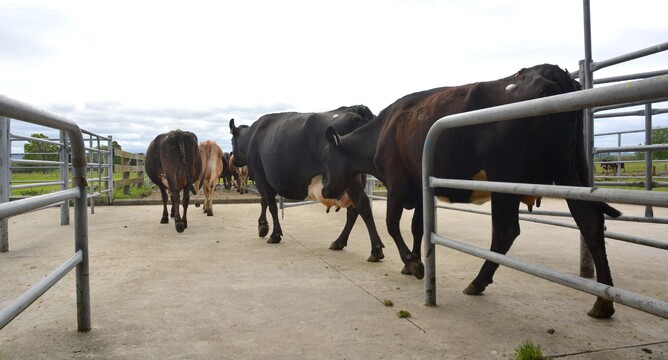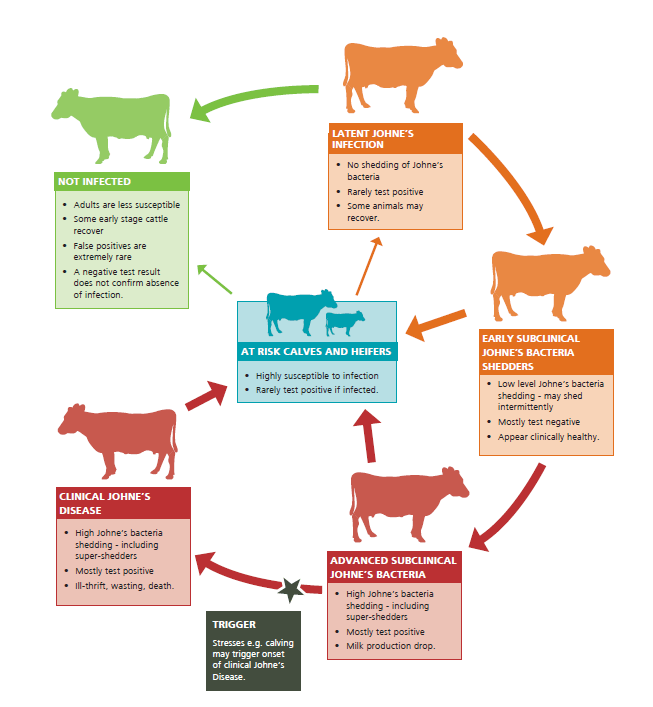Here are some strategies to help limit the progression of this costly disease and minimise losses.
Johne's disease is a commonly accepted and costly problem in Southland, causing large losses from drops in production and premature culling.
The disease is caused by a bacteria (mycobacterium paratuburculosis) that targets and damages the gut lining, leading to the 2 main signs of Johne's:
Watery ‘hose-pipe’ diarrhoea.
Progressive weight loss.
What makes Johne's so unique (and frustrating to identify/treat) is the long period between infection and clinical signs.
Infection
Infection most commonly occurs in young calves less than 6 months old, with immunity gradually developing as they age. However, older calves can still become infected if high levels of exposure are present.
The bacteria then lies dormant in the cow for a number of years, with signs of disease often not developing until they are at least 3-4 years old.
It is these later-staged diseased cows that shed the most amount of bacteria and are the highest risk of transmitting disease to calves, with transmission mostly occurring through faeces of affected cows.
Diagnosis
Another annoying aspect of the disease is the difficulty in diagnosing. Positive results are often accurate, however, given the nature of the bacteria, 'negative' cows can still be infected with early stage Johne's.
Bulk milk tests are useful to screen the herd, or, you can do a blood test. The latter is often used to confirm suspect cows on bulk milk tests and clinically suspect cows.
Treatment/management
There is no treatment for affected cows, so they should be culled at the earliest opportunity.
The ability of Johne's to ‘hide’ in a cow makes management of the disease difficult in a herd. However, there are strategies to limit the progression of the disease and minimise losses. These are mainly based around protecting the calf from exposure to Johne's bacteria:
Test & cull: Regular testing provides a greater chance of identifying affected cows and removing them from the herd. Focusing testing at the second or third herd test gives opportunity to remove affected cows before dry-off and calving.
Calf management: Having clean calving areas, removing calves at least twice daily, feeding colostrum/milk from Johne's-negative, healthy cows or young cows-only are all methods to help limit exposure of bacteria to calves.
VetSouth has worked with a variety of farms to help manage Johne's. Talk to your KeyVet for a plan to test and manage your herd.


